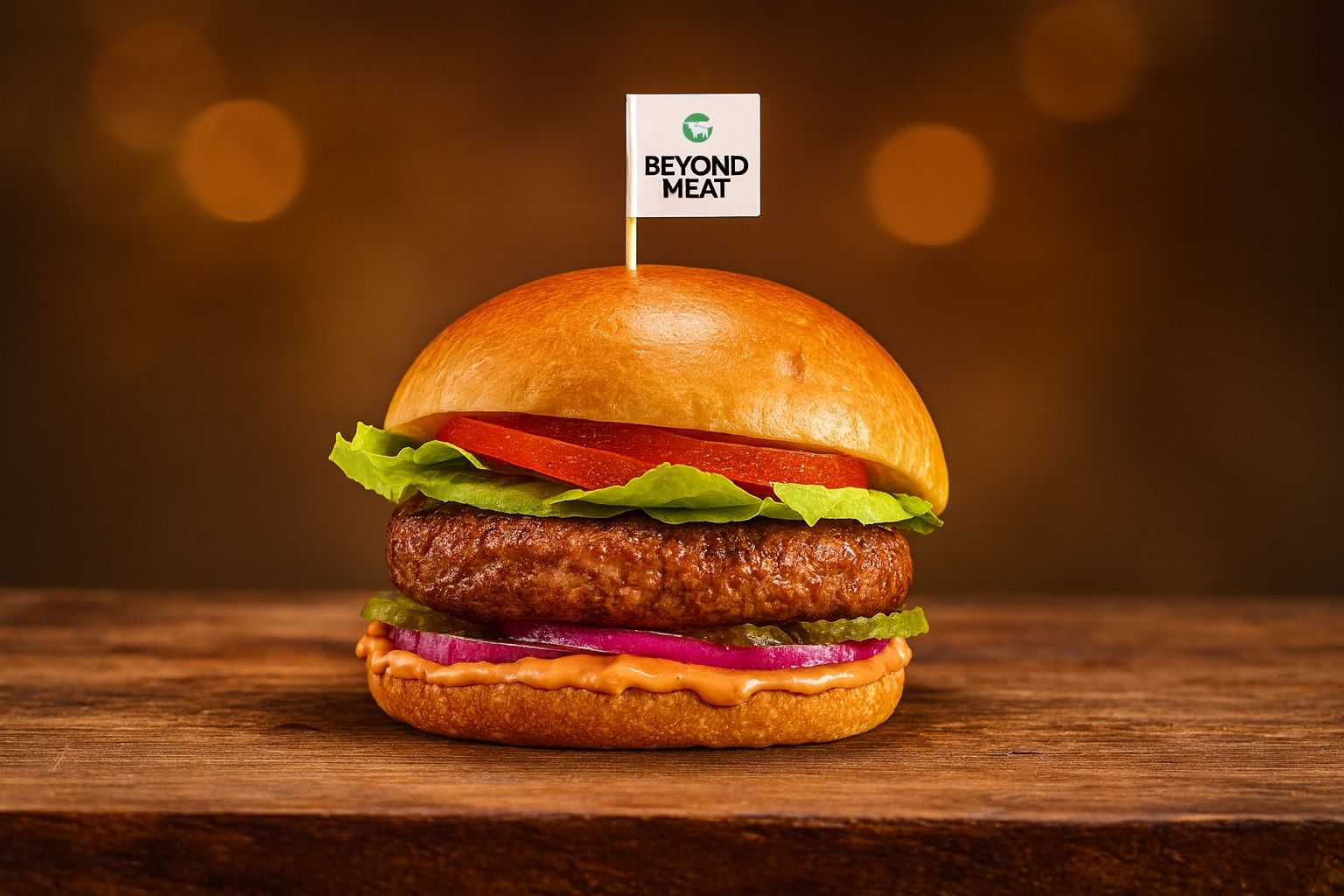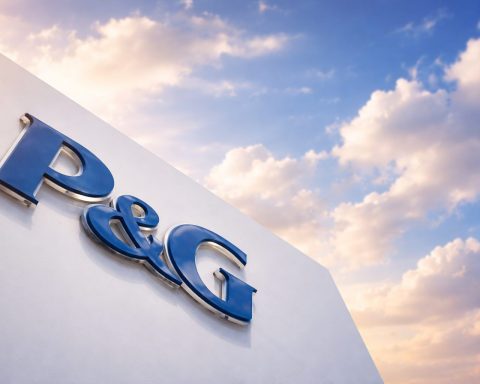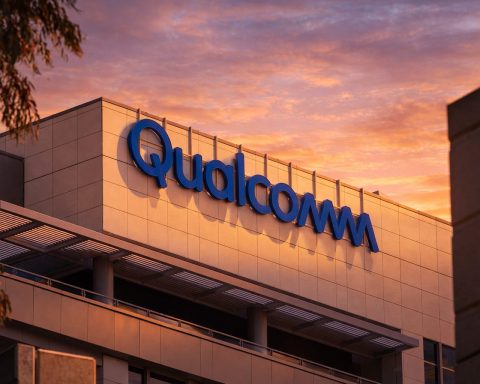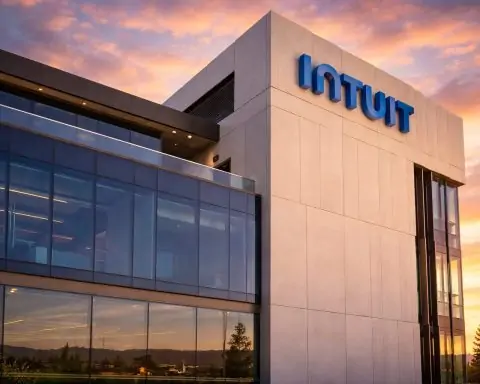- Stock collapses: Beyond Meat (BYND) shares plunged ~60% intraday on Oct 13, 2025, settling around $0.67 by Oct. 15 [1] (from ~$2.01 on Oct. 10). The stock is now near record lows (versus a ~$239 peak in July 2019 [2]) and down roughly 50% in 2025 [3].
- Debt swap details: The company exchanged about 96.9% of its 2027 convertible debt for new obligations. It will issue ~$208.7 million in new 7.0% notes due 2030 and 316.15 million new shares [4] [5], greatly diluting existing equity.
- Weak Q2 results: In Q2 (ended June 2025) revenue fell ~19.5% to ~$75.0 million (vs. $93.2M a year ago) [6], with EPS of –$0.43 (missing the –$0.37 consensus). Management now projects Q3 revenue of only ~$68–73M [7] and still aims for EBITDA break-even by 2026.
- Leadership changes: On Oct. 15, the company announced that founder/CEO Ethan Brown and CFO Nandita Bakhshi resigned from the board [8], signaling a major shake-up. Beyond Meat is pursuing new deals (e.g. a multi-year partnership as the Official Plant-Based Protein Partner of the Premier Lacrosse League [9]) and revamped products to revive demand.
- Analyst consensus: Sentiment is uniformly bearish. Analysts have issued only Sell/Underperform ratings (average consensus “Strong Sell”), with 12-month targets in the low single digits [10] [11]. TD Cowen recently cut its 1-year target to just $0.80 [12]. Short interest is extremely high (~64% of float [13]), among the highest on record, reflecting deep investor skepticism.
Debt Restructure Sparks Stock Crash
Beyond Meat’s brand remains visible to consumers, but behind the scenes its finances are in crisis. In mid-October 2025 the company announced an early settlement of its convertible debt exchange offer, triggering a historic market reaction. As Reuters reports, BYND shareholders are “agonizing” after the company offered existing bondholders new debt and stock in place of their $1.1 billion 2027 notes [14] [15]. With ~96.9% of noteholders participating, Beyond Meat will issue about $196.2 M in new 7.0% convertible notes (due 2030) plus a $12.5 M tender premium – roughly $208.7 M total – and 316.15 million new shares [16] [17]. In other words, each current share will face massive dilution.
The market’s response was brutal. Upon the announcement, the stock “tumbled as much as 58%” in a single session [18]. BYND closed Oct. 15 around $0.67 [19] – a level not seen since its 2019 IPO – down roughly half from the early-2025 price. For context, the stock once traded near $240 (July 2019) [20]. The debt exchange buys breathing room on interest payments, but the equity dilution has wiped out most of the company’s valuation. Even conservative analysts warn that investor equity is “all but gone” after this deal. (A summary of the exchange is shown below.)
| Convertible Debt Exchange – Early Settlement | Amount |
|---|---|
| 2027 Notes tendered (96.92% of issue) | $1,114.603 M [21] |
| New 2030 7.0% Notes to be issued | $196.217 M [22] (plus $12.5M premium, total ~$208.717M [23]) |
| New common shares to be issued | 316,150,176 [24] |
Beyond Meat’s crushing stock drop has come alongside red flags about its balance sheet. The company ended 2024 with ~$1.3 billion of net debt, and Moody’s warned recently that the debt burden is “high” given the weak cash flows [25]. With analysts now pegging FY2025 revenue around $281.6 M (a 14% drop) [26] and losses mounting, the debt-for-equity swap was seen as a last-ditch move. Even after the exchange, a 64% short interest indicates traders expect further pain [27]. As one Reuters analysis notes, BYND has now “fallen for four years straight and is down about 46% so far in 2025” [28].
Slumping Sales and Bleak Outlook
Beyond Meat’s financial results underscore why investors are so bearish. The plant-based meat market has cooled: U.S. sales fell 18% over the last two years (per industry data) [29]. Beyond Meat’s own Q2 (June 2025) performance continued the slide. Reported revenue was just $74.96 M, down 19.5% year-over-year [30], missing the consensus (~$85.7M). Loss per share was $0.43 (worse than the –$0.37 expected) [31]. On the call, CEO Ethan Brown admitted “we took it on the chin in 2025” but insisted the company was “truly excited about our future” [32]. Beyond Meat reiterated its modest guidance – Q3 revenues of only ~$68–73M [33] – and said it remains on track to reach an EBITDA break-even run rate by 2026.
Investors remain skeptical. Sales volumes are weak (almost every major retailer reports declining Beyond Meat dollar and unit sales), and margins are squeezed by heavy R&D and marketing costs. Industry experts like the Good Food Institute note that plant-based products still often lag conventional meat on taste and price [34], meaning further gains require innovation and cost cuts. Beyond Meat is counting on revamped recipes (it quietly reformulated the Beyond Burger for better taste and nutrition) and new product launches, but any turnaround will take time. For now, the fiscal outlook is grim: as MarketBeat notes, analysts even withdrew 2025 targets back in May [35] amid continual misses.
Leadership Shake-Up & New Partnerships
Amid the turmoil, Beyond Meat is also overhauling its leadership and strategy. On Oct. 15, the board announced the resignations of co-founder/CEO Ethan Brown (who stepped off the board) and CFO Nandita Bakhshi [36]. (Brown remains CEO but will face new oversight.) The board shuffled in new directors to replace them. The move underscores a push for new direction after years of heavy losses.
The company is simultaneously seeking growth through partnerships and branding. In mid-2025 Beyond Meat signed on as the Official Plant-Based Protein Partner of the Premier Lacrosse League [37], supplying athletes with products and co-branding on events. It has other global deals in place (e.g. multi-year agreements with chains under McDonald’s and Yum! Brands announced in 2023). Management emphasizes these tie-ups and marketing as key to boosting consumer awareness.
Despite these moves, the core business must improve to win back investors. The above image shows Beyond Meat’s flagship Beyond Burger patties, a staple product that the company hopes to sell in ever-larger volumes. However, the current strategy centers on cost-cutting and executing the debt deal. Beyond Meat has already cut expenses and headcount, and it claims the debt exchange “marks a meaningful next step” toward sustainability [38]. Still, the company will face the immediate test of integrating nearly 316 million new shares into the float – lock-up releases in mid-October will flood the market.
Analysts’ Take & Investor Sentiment
Wall Street’s message is clear: stay away. No major analyst has a Buy rating on BYND, and many have lowered their targets sharply [39] [40]. For example, TD Cowen just reiterated a Sell on October 14, 2025 (cutting its 1-year price target to $0.80) [41]. Weiss Ratings likewise reaffirmed a “Sell (E+)” grade in early October [42]. Overall consensus price targets are in the low single digits ($2–3 per share) [43] – still above the current price, but low enough to imply little upside.
The very high short interest (above 60% of free float [44]) shows how bearish hedge funds and traders remain. Institutional ownership has been eroding, and insiders have been selling. Options markets are also skewed: the put/call ratio is well over 2 (favoring puts), indicating traders expect further declines. In sum, virtually all signals point to a lack of confidence.
What’s Next? Beyond Meat’s next catalyst will be its late-October quarterly report (for Q3), and any signs of stabilization in sales or cost structure. The debt deal closes Oct. 15, and the new notes and shares start trading immediately, locking in the dilution. Some contrarians may argue the worst is priced in – after all, it’s hard to fall 99% from a hype peak and still not attract buyers at a few dollars. Others note that the plant-based meat market itself is under pressure, and a turnaround depends on trends (health-conscious eating) rather than just finance. For now, most analysts and investors view Beyond Meat as a cautionary case: a once-promising “green” stock now battling for survival.
Sources: Recent news and filings from Beyond Meat (via GlobeNewswire), Reuters, MarketBeat, Los Angeles Times, ts2.tech, and other financial media [45] [46] [47] [48] [49] were used to compile this report. Each figure or quote above is supported by the cited source.
References
1. ts2.tech, 2. www.latimes.com, 3. www.marketbeat.com, 4. www.globenewswire.com, 5. www.globenewswire.com, 6. www.marketbeat.com, 7. ca.investing.com, 8. www.tradingview.com, 9. premierlacrosseleague.com, 10. www.marketbeat.com, 11. www.marketbeat.com, 12. www.marketbeat.com, 13. www.reuters.com, 14. www.reuters.com, 15. www.globenewswire.com, 16. www.globenewswire.com, 17. www.globenewswire.com, 18. www.reuters.com, 19. ts2.tech, 20. www.latimes.com, 21. www.globenewswire.com, 22. www.globenewswire.com, 23. www.globenewswire.com, 24. www.globenewswire.com, 25. ts2.tech, 26. www.reuters.com, 27. www.reuters.com, 28. www.reuters.com, 29. www.latimes.com, 30. www.marketbeat.com, 31. www.marketbeat.com, 32. ca.investing.com, 33. ca.investing.com, 34. www.latimes.com, 35. www.reuters.com, 36. www.tradingview.com, 37. premierlacrosseleague.com, 38. www.globenewswire.com, 39. www.marketbeat.com, 40. www.marketbeat.com, 41. www.marketbeat.com, 42. www.marketbeat.com, 43. www.marketbeat.com, 44. www.reuters.com, 45. www.globenewswire.com, 46. www.reuters.com, 47. www.marketbeat.com, 48. www.marketbeat.com, 49. premierlacrosseleague.com







